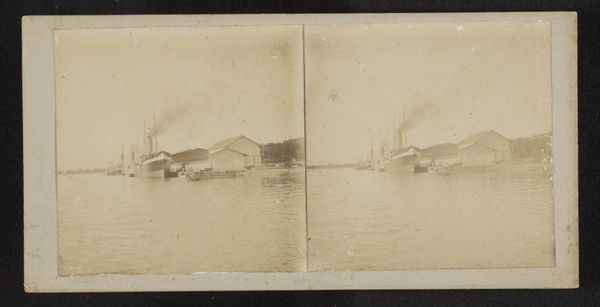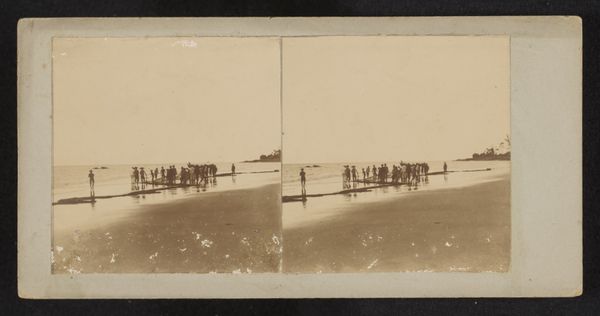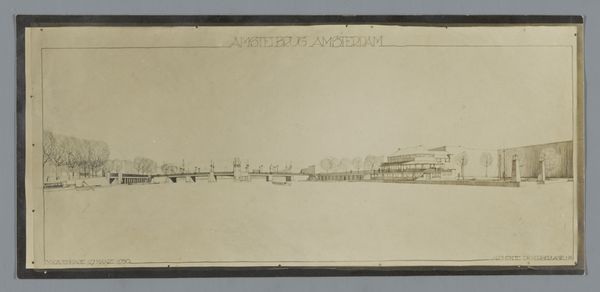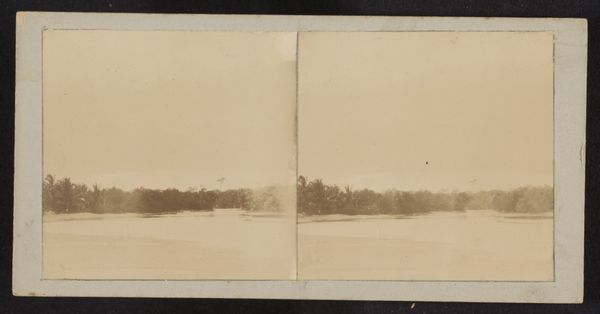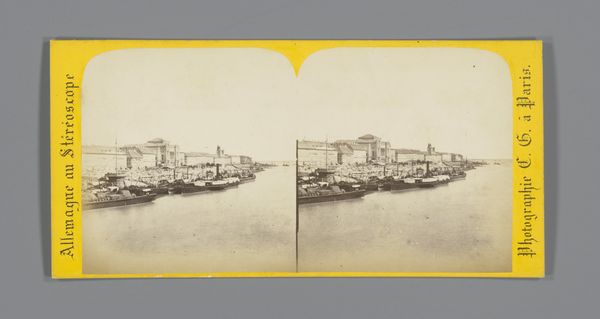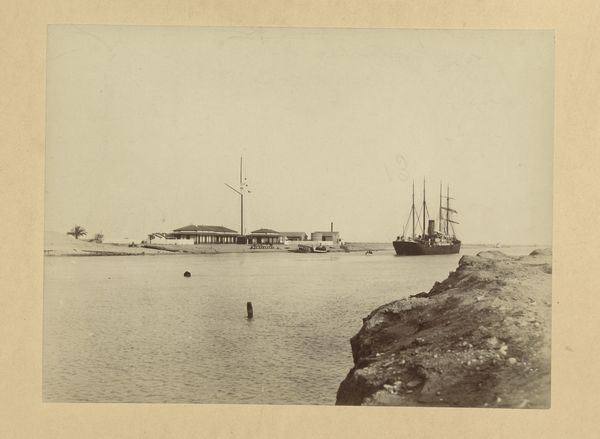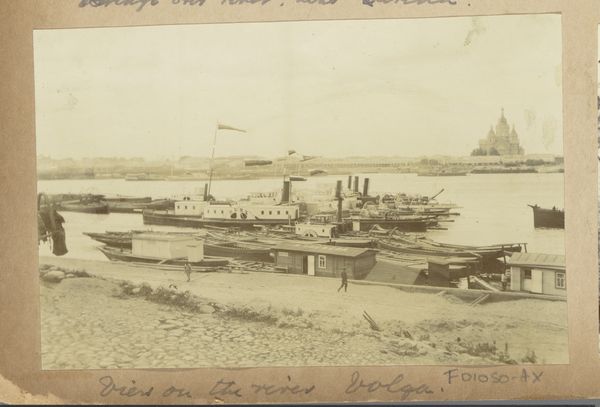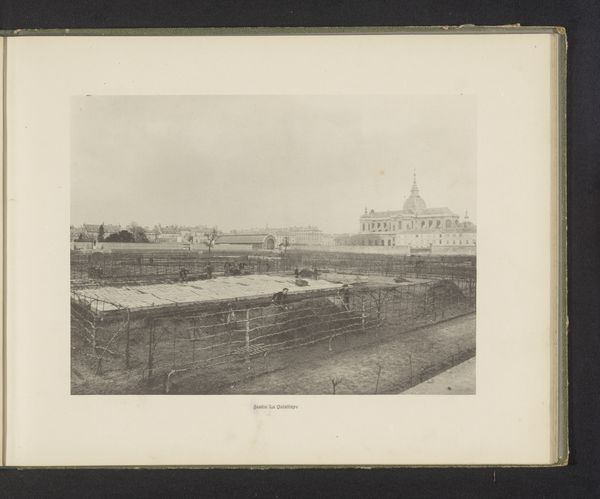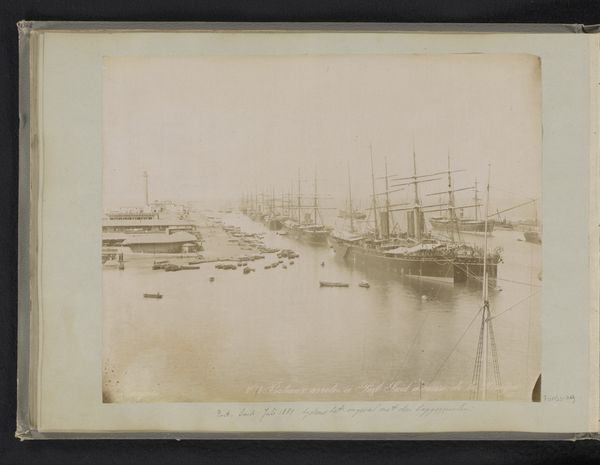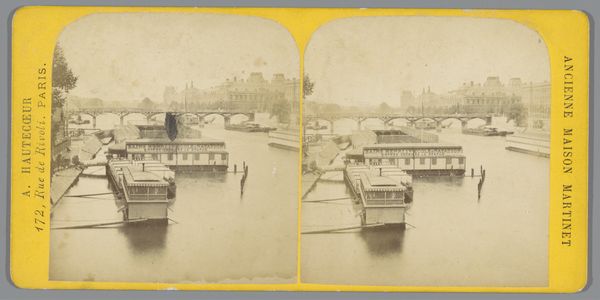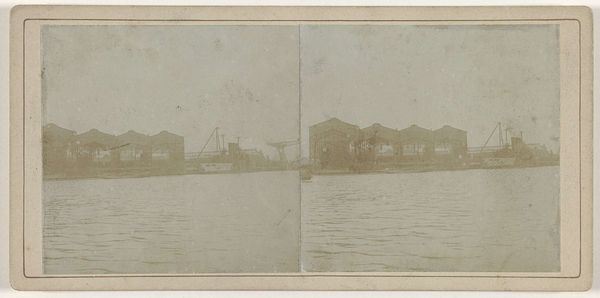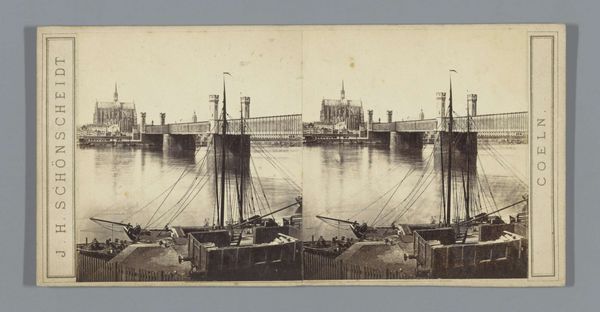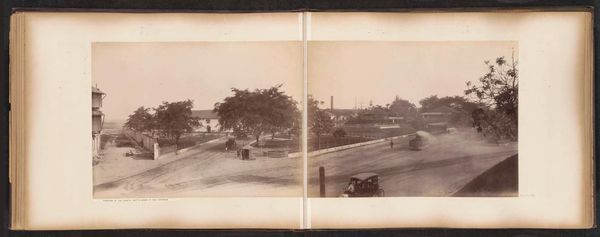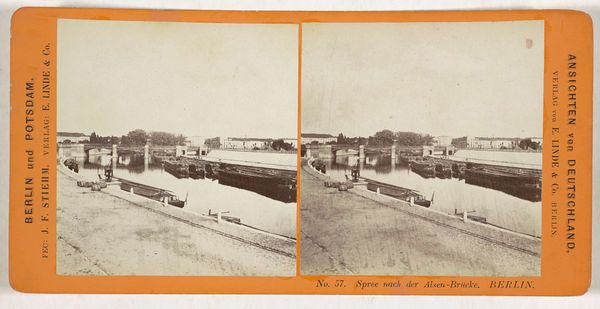
print, photography, albumen-print
# print
#
landscape
#
photography
#
cityscape
#
albumen-print
Dimensions: height 77 mm, width 77 mm, height 88 mm, width 178 mm
Copyright: Rijks Museum: Open Domain
Curator: This is "Tandjong Priok," a photographic print by Robert Julius Boers, taken sometime between 1900 and 1922. It’s an albumen print currently held in the Rijksmuseum. Editor: The overall sepia tone gives it such an antique feel. I’m instantly transported; it’s so evocative. And the water's stillness mirrors that sense of historical pause. Curator: That's interesting because, of course, ports were anything but still; they were sites of intense global exchange, connecting disparate economies and cultures, although often through unequal power dynamics. We see here the port of Tandjong Priok, which played a crucial role in the Dutch colonial project in Indonesia. Editor: It’s true, that makes me reconsider what seems calm at first glance. There are steamships lined up by what look like cargo buildings, I suppose this scene actually hummed with human activity and maybe even some tensions back then. The architecture appears designed to make an imposing statement of power. Curator: Absolutely. The photograph not only captures the infrastructure of trade but also embodies the visual rhetoric of empire. These infrastructures and imposing structures visually reinforced colonial authority, mediating how both colonizers and the colonized experienced place. Editor: What a fascinating contradiction then; on the surface, serene, yet a place deeply embroiled in complex socio-political currents! Thinking about who likely had the privilege to photograph such scenes is sobering. It kind of asks, whose story does this picture really tell? Curator: Precisely. By engaging in a critical dialogue about the context in which this image was produced, we are more clearly reminded how colonial powers operated. The visual language employed highlights not just commercial enterprise but power dynamics. Editor: I find it particularly intriguing how an object that seems ostensibly simple—a landscape photo of a port—can unpack layers and layers of history. The quiet beauty throws colonial dynamics into even sharper relief. Curator: These early photographs give us unique windows onto past realities, prompting ongoing reflections on representation and power. It is the act of critical questioning that completes them. Editor: So here’s to looking beneath the surface – you’ll never know what’s under there waiting to be stirred up!
Comments
No comments
Be the first to comment and join the conversation on the ultimate creative platform.
